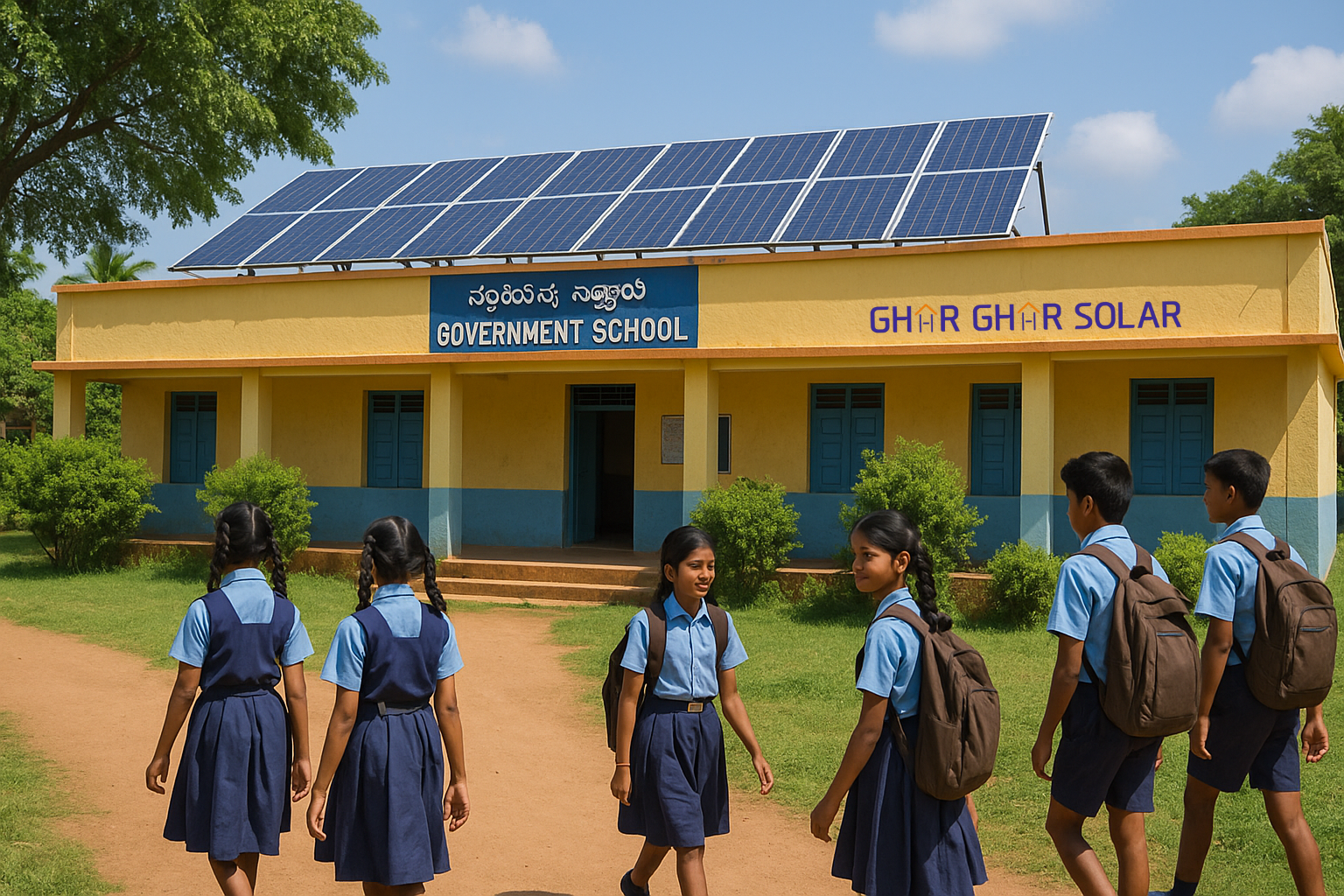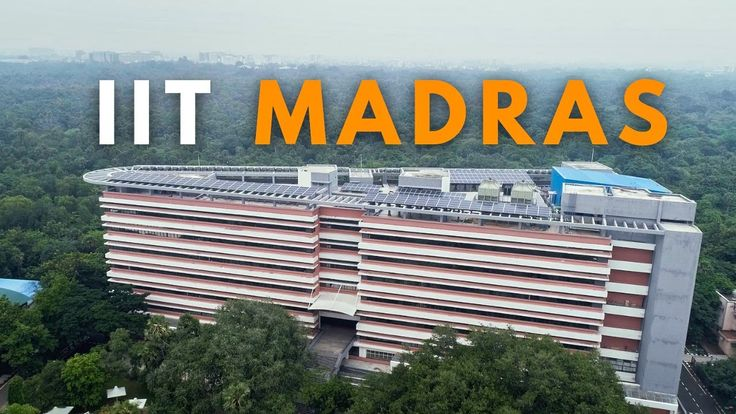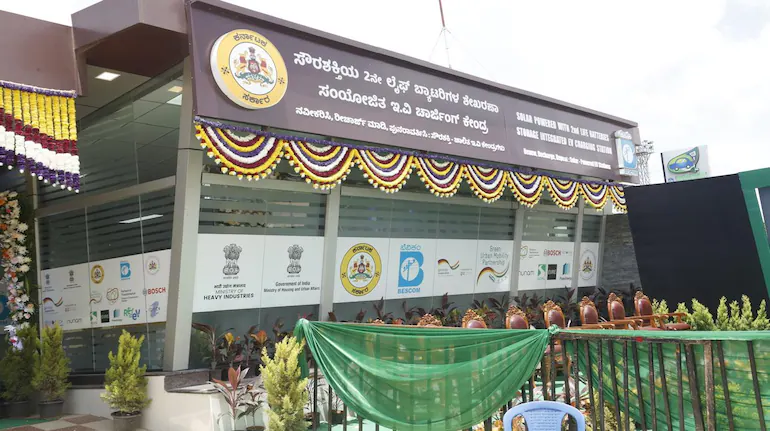Government schools in Hubballi are entering a more sustainable future with rooftop solar power upgrades under the PM SHRI (Pradhan Mantri Schools for Rising India). Four schools in the Hubballi-Dharwad area have been selected and approved by the PM SHRI to install 5‑kilowatt (kW) rooftop solar systems which aim to address voltage-related issues and reduce dependence on the conventional grid. [TOI Source]
A Smart Shift Toward Green Energy
The schools chosen for the solar installations include:
- PM SHRI Government Higher Primary School, Yaliwal (Kundagol taluk)
- PM SHRI Model Primary School, Galagihulakoppa (Kalaghatagi taluk)
- PM SHRI Model Primary School, Amargol, Hubballi
- PM SHRI Government Higher Primary School No. 2, Alanavar (Navalgund taluk)
Each school will receive funding ranging from ₹3 to ₹4 lakh, enabling them to install 5 kW rooftop solar systems with proper metering. This project is part of a larger central initiative under PM SHRI focused on improving infrastructure in selected government schools to make them energy-efficient, technologically equipped, and environmentally conscious. [ET Energyworld]
The Need for Solar in Schools
In many rural and semi-urban schools, frequent power cuts hinder daily activities like smart classes, operation of digital devices, and even regular lighting and fans during hot summer months. The transition to solar will:
- Provide uninterrupted electricity
- Cut down electricity costs
- Enable better use of smart classrooms and digital tools
- Promote climate education among students
Plus, the savings from reduced energy bills can be redirected towards better teaching materials, student development programs, and school maintenance.
Educating by Example
Changing the infrastructure of schools isn’t just about bricks and mortar—it’s about learning too. Students will see solar panels installed, observe how they produce clean energy, and learn firsthand about sustainable energy practices. Schools can become living examples of green innovation.
This also instills environmental responsibility in young learners—essential for India’s sustainable future.
Part of a Larger Mission
As part of the broader PM SHRI Model School Scheme, the plan is to establish 14,500 model schools nationwide—selected based on performance and facility needs, then supported with digital tools, green infrastructure, and smart teaching methods. Karnataka is leading the implementation, and these solar schools in Hubballi mark significant progress. [The Quint]
What’s Next?
Installation work is expected to begin shortly after fund disbursement. Schools will be monitored to ensure efficient system operation. Subsequent steps may include expanding solar coverage to additional schools across the district and the state. If successful, this project could serve as a blueprint for other rural and semi-urban schools in India to adopt renewable energy alongside digital learning.
Conclusion
Hubballi's government schools are sending a strong message by embracing solar energy: education can advance hand‑in‑hand with sustainability. With stable electricity, smarter classrooms, and greater environmental awareness among students, these schools are evolving into centers of both learning and change.



